Crescent City Christmas Card
With a nod to the great Welsh poet Dylan Thomas’ beloved “A Child’s Christmas in Wales,” this album might have been titled, “A Child’s Christmas in New Orleans.” It brings us the music, from “The Little Drummer Boy” to “We Three Kings,” that Wynton grew up playing at midnight masses and other Yuletide events. Reimagined and interpreted, Wynton’s jazzy arrangements swing with joy, reverence, and playful good humor. The album features Kathleen Battle on “Silent Night” and Jon Hendricks on “Sleigh Ride,” as well as Wynton’s spoken narration, to his soulful arrangement of “Twas the Night Before Christmas.”
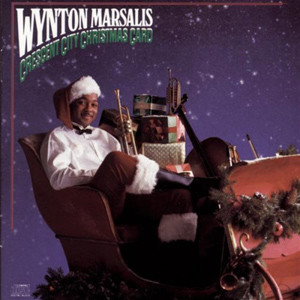
Album Info
| Ensemble | Wynton Marsalis Septet |
|---|---|
| Release Date | October 3rd, 1989 |
| Recording Date | January 24 & 25, April 3 & 4, 1989 |
| Record Label | Columbia |
| Catalogue Number | 465879 2 |
| Formats | CD, Digital Download, LP |
| Genre | Jazz Recordings |
Track Listing
| Track | Length | Preview |
|---|---|---|
| Carol of the Bells | 4:54 | Play |
| Silent Night – soprano: Kathleen Battle | 4:46 | Play |
| Hark! The Herald Angels Sing | 3:10 | Play |
| Little Drummer Boy | 5:30 | Play |
| We Three Kings | 5:22 | Play |
| Oh Tannenbaum | 1:38 | Play |
| Sleigh Ride | 4:30 | Play |
| Let It Snow! Let It Snow! Let It Snow! | 4:20 | Play |
| God Rest Ye Merry Gentlemen | 5:44 | Play |
| Winter Wonderland | 2:54 | Play |
| Jingle Bells | 3:23 | Play |
| O Come All Ye Faithful | 1:38 | Play |
| ‘Twas The Night Before Christmas | 8:09 | Play |
Liner Notes
As might be expected, the joy, reverence, play, and humor associated with the Christmas season dominate the moods of this Wynton Marsalis album. But the ease and precision with which a down-home and elegant victory has been achieved over the large challenge of arranging such familiar material will surprise even seasoned Marsalis listeners. What amounts to the thematic and emotional folklore of the winter holidays has been fused with the clarity of passion and musical sophistication expected of the best of the jazz tradition. Here the talent for composition, arranging, and recasting that Wynton Marsalis has been diligently expanding upon since his very first album as a leader proves itself to have arrived at yet another fresh point of expressiveness. And as with all complete artistic achievements, it results from the seamless interweaving of the aesthetic and the personal.
“For at least five years,” says Marsalis, “I have wanted to do a Christmas album. It has traditions and emotional associations that are very special. When I was growing up, I would always play these songs in different styles – funk versions with our funk band, then jazz versions in other contexts. Every year there was a production of The Messiah in which I would play piccolo trumpet, and at midnight mass I would play piccolo trumpet solos with organ accompaniment. And who can forget the band arrangement of Sleigh Ride that every band plays every year at their Christmas concert?”
Marsalis also has fond memories of the time of the year when the feeling of community that he was accustomed to experiencing on a daily basis as a Southerner became “even more consistent.” He recalls “people seeming even more at ease with the human side of their personalities because there was a national and international warmth that everybody was acknowledging.”
And there was the usual American childhood, dense with Christmas stimuli for the imagination. “As a kid, you had these two stories that took over your mind – the baby Jesus born in a manger when there was no room in the inn, and Santa Claus flying all over the world in a sleigh to deliver toys in one night. This filled your little head with all kinds of images. There was the star guiding the three wise men, the North Pole, Bethlehem, elves, angels, reindeer, camels, sand dunes, sleigh bells, and the mystery of what the next morning would bring on Christmas day. Now, as a musician, I really want to recapture that in rhythm, and tune. I worked at getting the awe and the exotic qualities associated with one kind of Christmas music as well as the fantasy, the jokes, the humor, and the feeling of friendship and celebration another kind of Christmas music calls to mind.”
By selecting material that uses the Nativity, Kris Kringle, and the festive doings of the holiday season as subjects, Marsalis has given the album a structure in which reverential lyricism and celebratory pulsations enhance each other through contrast, forming a complete unit of Christmas feeling. There are immediate examples, such as the transcendent adoration of Kathleen Battle on Silent Night, the sound of hard frolic steaming up over the cold in Jingle Bells, and the poignance brought to Oh, Tannenbaum through the gentle rocking of that carol in the bosom of blues harmony.
“Because these tunes use such traditional chords and forms, much can be learned by bringing the language of jazz to them. You have to rethink every musical element: melody, timbre, harmony, and rhythm. You have to thin about different rhythms and tempos and which tunes they’re appropriate for. The challenge is whether or not you can maintain the meaning of the song but bring your own personality to it, relentlessly. That’s why I call this album Crescent City Christmas Card: I’m bringing things to this music that originated in New Orleans, especially in terms of the use of the ensemble. Jelly Roll Morton’s conceptions are now basic to what I do in my own band. I use interludes, riffs, breaks, tempo and meter changes, counterpoint, whatever gives the music more richness. On this album, I also wanted to write for more horns because you can deal with more sophistication, colors, and timbres.”
Clarinetist Alvin Batiste, woodwind specialist Joe Temperley, and trombonist Wycliffe Gordon expand what was then Marsalis’ working sextet. The leader varies the sizes of his ensembles and avoids the format of theme, improvised features, theme. Throughout, a superior sense of drama, balance, and contrast is exhibited in passages of sometimes startlingly subtle detail.
“Along with addressing Jelly Roll Morton, I’m reaching for some of the things laid out by Duke Ellington, the grand master of all American music. What Ellington understood better than anybody else was that when you think of musicians fulfilling parts in a narrative, or becoming aspects of the atmosphere – as countermelody, harmony, timbre, or rhythm – then the notes you pick for them offer something much greater than technique, regardless of how much precision is involved. The kind of precision Duke Ellington was dealing with always pointed to clarity of expression. My efforts are understandably far below what he was doing, but whatever success I have on this album is the result of trying to deal with his legacy and that of New Orleans.”
Though the great achievement of Ellington’s legacy constitutes a mountain that may never be scaled, and however modest Marsalis might be about his work on this recording, it is truly Ellingtonian in its combination of gutbucket technique and formal understanding. It is highly possible that Marsalis, alone of his generation, has the will and the talent to grapple with the challenges thrown down by the Washingtonian Shakespeare of American music. The closeness in conception that the trumpeter has grown to have in common with the grand maestro is illustrated by the various ways he plays his trumpet, the selection of his players, the qualities he seeks from his ensembles, and the emotional and technical scope of the writing.
In his own playing, Marsalis uses what is clearly the most beautiful tone to have arrived in the last 20 years for distinctly different colors in the features on Let It Snow, Carol Of The Bells, and Winter Wonderland. His plunger playing on Silent Night, his Spanish cry on We Three Kings, the muted ensemble texture of Jingle Bells, and the dissimilar approaches he applies to Oh, Tannenbaum and The Little Drummer Boy allow him a range of expressive technique any listeners, students, or practitioners of this music will immediately appreciate. As an improviser, his control of form is easily heard in Let It Snow, where the initial ideas are developed throughout, including a wonderful salute to Charlie Rouse in the bridge. That a musician of his virtuosity is able to pursue such subtleties of inflection while keeping the more obvious examples of command in check shows how much his concern for the human conditions music can illuminate takes precedence over all else.
By using blues, blues timbres, the harmonic implication of blues, the percussive, melodic, and harmonic strengths of the string bass, the gradations of joy and motion that swing and grooves propelled by drums can supply as well as the eloquence of feeling Kathleen Battle’s voice provides in one context and that of Jon Hendricks does in another, Marsalis extends the individual sensibility of his musicianship into the largest arena we have hard his talent enter thus far. From Marcus Roberts, Wess “Warmdaddy” Anderson, Todd Williams, and Wycliffe “Pine Cone” Gordon (who joined the group last summer), he gets improvisations and ensemble playing that make clear why his is perhaps the best working band in jazz. The heroic tone, time, and drive heard from Reginald Veal with either regular drummer Herlin Riley or guest Ben Riley show how well the integrity of swing is maintaining itself in these dark ages of the brutalized backbeat. Marsalis is justly proud of the presence of clarinetist Alvin Batiste: “I thought of all the times when we were growing up in New Orleans and how much he was dedicated to strengthening our resolve about the music. It wouldn’t make any sense to say anything about how he sounds because that’s quite evident.” In his obligatti and virtuosic ensemble boosts, Batiste affirms why Ellington never turned his ear away from that marvelous instrument. The woodwind flexibility of Joe Temperley proves him a fine specialist, and of his baritone work Marsalis says, It contains a deep understanding of the contribution Harry Carney made to music by showing the flexibility and expressiveness that register can add to the music.”
In his discussion of the individual pieces, Marsalis makes specific the album’s narrative vision and he ways musicians play particular roles in tonal stories and impressions of mythic experience. Of Carol Of The Bells, he says “I thought of the clarinet, soprano, and alto as little people who irritate humorously with little repetition. The baritone and the trombone are delivering the more serious message at the bottom. So you have the contrast between the gravity of the lower register shout and the levity and clarity of the upper register,. It is also a minor blues with two feelings of meter, one straight 3/4, the other 6/4. In the upper reed parts I’m also turning the beats around the way they used to in the old stride school.”
Having gotten Kathleen Battle’s consent to record Silent Night when she came to hear his band during the Christmas season last year, Marsalis provided an exquisite setting for her. “We were trying to capture the kind of swooning that goes on during the lights-out calm that sits over a city at night. That mood is set against the incredible purity of Kathleen Battle’s voice, which is reminiscent of the Nativity scene, the beauty of this woman and her child. In my plunger solo, I’m emulating the town crier delivering the news through the streets of the city, taking the translation from the angel of Kathleen Battle.”
Hark! The Herald Angels Sing “is a dialogue between the European idea of the song and the American version. The piano opening with traditional harmonies is answered by the band with a groove. Then we return to the introductory statement, play it like a march, and go into another groove. There is also the relationship between the melody and the group. We play the angels as we answer the alto in a softer volume. It features Wess Anderson because of the singing quality of his tone and the melodic purity of his playing.”
The remarkable Little Drummer Boy arrangement uses the different ranges of the instruments and manipulates a growing body of material over a groove that gives the illusion of more than one meter. “I wanted to get the effect of being on a vista where you can see a long distance. Out there is the image of a group of people coming from far away, closer and closer, then passing out of view. The clarinets give the Middle Eastern sound and the melody keeps repeating because I wanted to create the feeling of the little drummer boy’s perseverance and the effect of a long, monotonous march through the desert, miles and miles of the same thing.”
When putting together this interpretation of We Three Kings, Marsalis had the traditional New Orleans ensemble in mind. “But here the clarinet is replaced by the soprano. So the trumpet carries the melody, the soprano the obligato, and the trombone the tailgate lower harmony part. Those are the three kings. I have a little Spanish tinge section in there that Jelly Roll Morton might like. It sits in for the Orient.”
Because Oh, Tannenbaum is German in origin, Marsalis was “trying to write an American version of a chorale. It is somewhat in the style of Bach, with the eighth notes giving it motion. But above all, it is an example of blues harmony.”
On Sleigh Ride we hear Jon Hendricks, who was contacted “because he brings the real sound of jazz to the material, which is spontaneity and an original timbre. I love the rhythmic intensity he sings with and the blues inflected melodic phrases he improvises. The scat improvisation he drops on this tune leaves no doubt in your mind why he is such a proud and elegant man with a good sense of humor.”
Let It Snow takes us to the North Pole. “The elves are in the workshop at the start, doing all of their work in wood and trying to get it finished. They want it to snow so they can get on with Christmas. I come in on trumpet as Santa Claus calling for the snow.”
The combination Marsalis uses on God Rest Ye Merry Gentlemen is one he heard on Ellington’s “Sonnet In Search Of A Moor.” The lyrics made me think of buoyancy and weight, sort of a chorale on top in blues harmony and the bass playing the melody. Marcus Roberts is featured because I wanted the timbre of the piano dealing with blues-oriented ideas about those chord changes.” After playing a tribute to Charles Mingus’ “Haitian Fight Song” solo, Reginald Veal develops his part into a surpassing example of the power of bass textures. Winter Wonderland is simply a quartet track that swings forward very nicely.
Jingle Bells adds more holiday fun. “The saxophones are the hooves of reindeer and the woodblock Ben Riley plays captures the clip clop of hooves as well. I had the trumpet and the trombone muted because I was looking for a bell-like quality. They come unmuted when it says “Oh, what fun it is to ride, and an open sound sets up the entrance of the trombone shouting the title of the tune.” O Come All Ye Faithful is a piano solo “done in the down-home church style of the J Master.’”
Twas The Night Before Christmas concludes the set. With great humor, Marsalis delivers the poem and calls forth from his ensemble the sensuous lyricism of the blues sound and the chesty mirth of swing necessary to amplify his feeling for the text. It is an appropriate ending to an album that will continue to illuminate variegated emotion in an aesthetic language listeners will enjoy both during and long after the season’s parties, dinners, exchanges of presents, and gathering of friends and relatives. That Wynton Marsalis has chosen to wrap such a surprising gift in the blues papers and ribbons of swing is but another instructive example of the artistic temerity titans such as the Crescent City’s Jelly Roll and the Washingtonian Duke continue to inspire within the hearts of the most talented young people among us.
- Stanley Crouch
Credits
MUSICIANS:
CAROL OF THE BELLS
SILENT NIGHT
LITTLE DRUMMER BOY
LET IT SNOW! LET IT SNOW! LET IT SNOW!
HARK! THE HERALD ANGELS SING
TWAS THE NIGHT BEFORE CHRISTMAS:
Wessel Anderson, Alto Saxophone
Alvin Batiste, Clarinet
Wydiffe Gordon, Trombone
Wynton Marsalis, Trumpet
Herlin Riley, Drums
Marcus Roberfs, Piano
Joe Temperley, Bass Clarinet & Baritone Saxophone
Reginald Veal, Bass
Todd Williams, Tenor & Soprano Saxophone
JINGLE BELLS
SLEIGH RIDE
WE THREE KINGS:
Wessel Anderson, Alto Saxophone
Wycliffe Gordon, Trombone
Wynton Marsalis, Trumpet
Ben Riley, Drums
Marcus Roberts, Piano
Reginald Veal, Bass
Todd Williams, Tenor & Soprano Saxophone
OH TANNENBAUM:
Wes Anderson, Alto Saxophone
Wycliffe Gordon, Trombone
Wynton Marsalis, Trumpet
Todd Williams, Tenor & Soprano Saxophone
WINTER WONDERLAND:
Wynton Marsalis, Trumpet
Ben Riley, Drums
Marcus Roberts, Piano
Reginald Veal, Bass
GOD REST YE MERRY GENTLEMEN:
Todd Williams, Clarinet
O COME ALL YE FAITHFUL:
Marcus Roberts, Solo Piano
SPECIAL GUEST VOCALISTS:
Kathleen Battle (Soprano): “Silent Night”
Jon Hendricks: “Sleigh Ride”
SPECIAL THANKS TO:
Alvin & Edith Batiste, Joe Temperley, Ben Riley, Jon Hendricks, Kathleen Battle, Murray Horwitz, Herb Harris, Ken Nahoum, Billy Banks and Michael Hill.
Produced by Steve Epstein
Executive Producer: George Butler
Engineer: Tim Geelan
BMG Engineer: Dennis Ferrante
Recorded at RCA Studio A, January 24 & 25, April 3 & 4, 1989.
All songs arranged by Wynton Marsalis.
Narration on //Twas The Night Before Christmas” by Wynton Marsalis.
Piano provided by Steinway.
Exclusive Personal and Financial Management:
AMG International/P.O. Box 55398, Washington, DC 20011
Edward C. Arrendell II, Vernon H. Hammond III, Partners
Booking Agency: Agency For The Performing Arts
888 Seventh Avenue, New York, NY 10106 (212) 582-1500
Agency For The Performing Arts
9000 Sunset Boulevard, Los Angeles, CA 90069 (213) 273-0744
Art Director: Josephine DiDonato
Photography: Ken Nahoum
Publishers:
1,2,3,5,9,11,12,13, Skaynes Music
4, Mills Music Inc./International Korwin
6, Public Domain
7, Sleigh Ride
8, Cahn Music Co./Producer’s Music Co.
10, Bergman, Vocco & Conn.
Personnel
- Joe Temperley – baritone sax, bass clarinet
- Reginald Veal – bass
- Marcus Roberts – piano
- Wycliffe Gordon – trombone
- Alvin Batiste – clarinet
- Herlin Riley – drums, tambourine
- Todd Williams – tenor sax, soprano sax
- Wess “Warmdaddy” Anderson – alto sax, sopranino sax
- Kathleen Battle – vocals
- Jon Hendricks – vocals
- Ben Riley – drums
Also of Interest
-
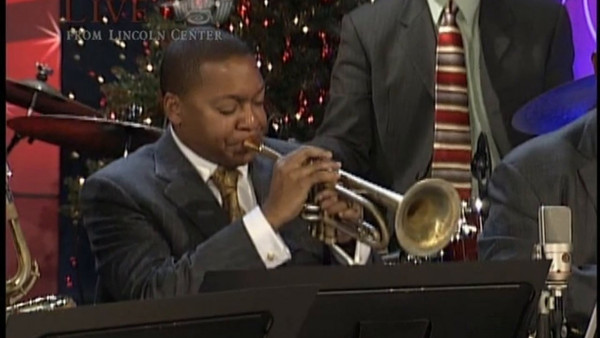 Videos
Videos
Carol of the Bells - Wynton Marsalis Ensemble at Dizzy’s Club 2007
-
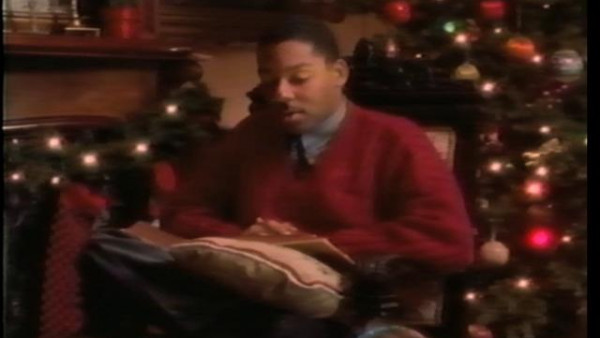 Videos
Videos
Wynton Marsalis Reads ” ‘Twas the Night Before Christmas”
-
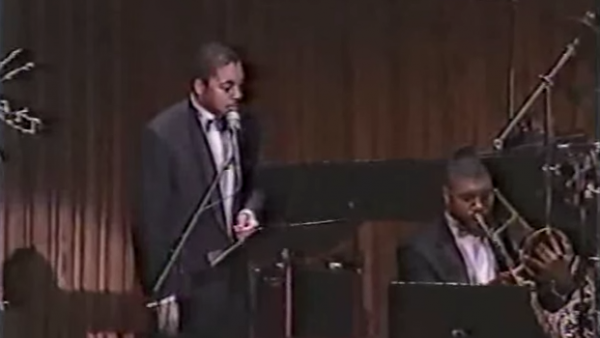 Videos
Videos
‘Twas the night before Christmas - A Classical Jazz Christmas with Wynton Marsalis (1989)
-
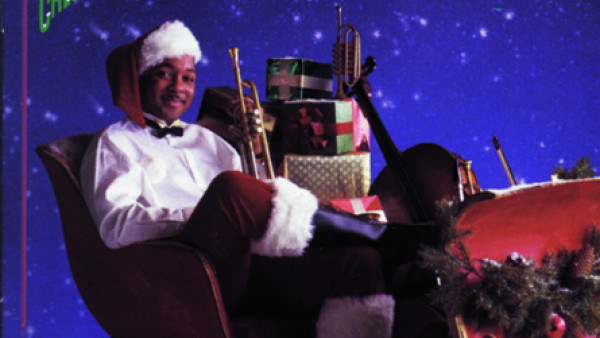 Wynton's Blog
Wynton's Blog
Joe Temperley and Wycliffe and everybody came to my house on 18th street to run over the music
-
 News
News
Video: Wynton playing Red Hot Holiday Stomp at JALC
-
 News
News
Video: The Carnegie Hall Christmas Concert
-
 News
News
Hark! The Heralded Jazzmen Swing Some Familiar Melodies
-
 News
News
Sexy Wynton Marsalis
